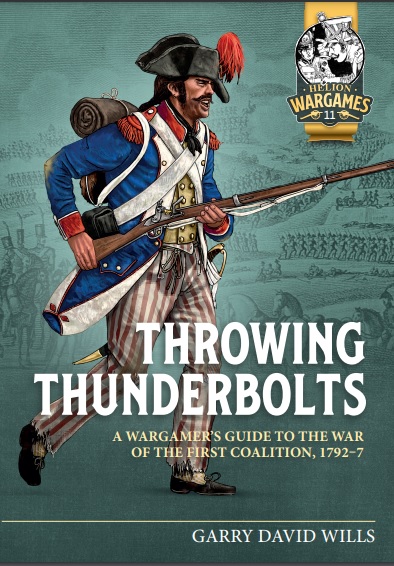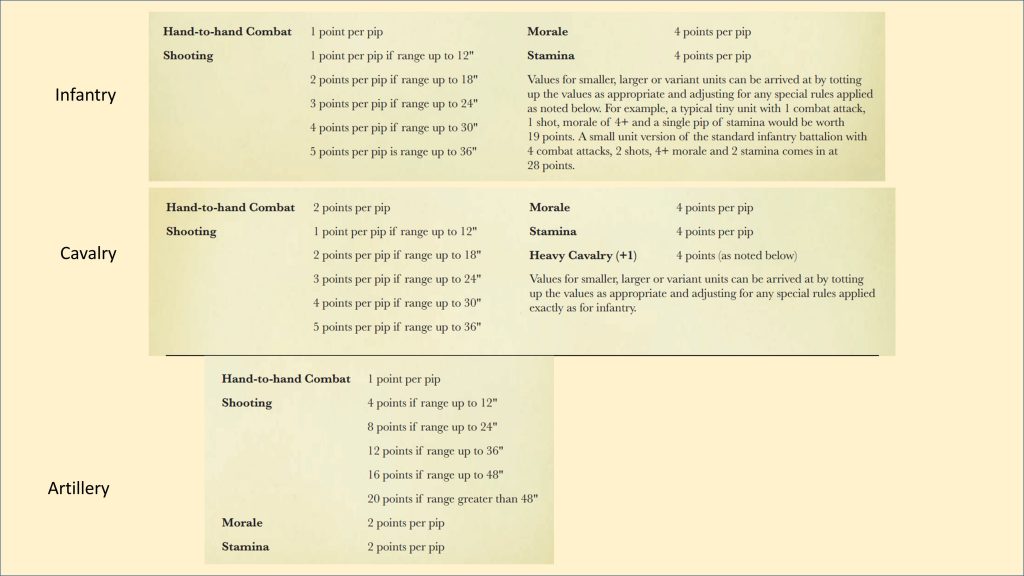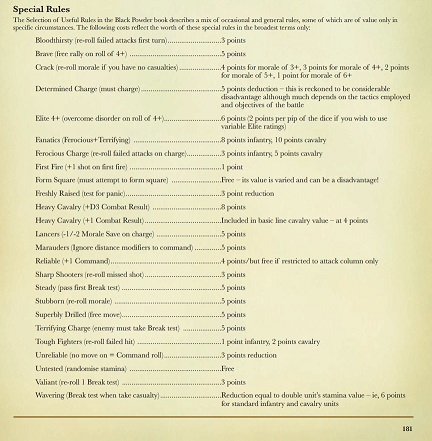- Battle history of the French Battalions at Villamuriel ”23/5/2024”

This table is from p,75 of my book Wellington at Bay, the battle of Villamuriel, 25 October 1812, published by Helion in 2020.
- Episode 31 Assault on Fort Mulgrave Toulon 1793 at The Other Partizan 2023 ”27/1/2024”
This video includes the background to a scenario from my new book, Throwing Thunderbolts, a Wargamer's Guide to the War of the First Coalition 1792-7, published by Helion. It also shows the scenario used as a participation game at the Other Partizan 2023 wargames show in Newark UK. The game was played using 15mm figures and with Black Powder rules, using scenario specific rules to manage the effects of attacking at night on movement and visibility. Fort Mulgrave was the main fortification defending the Caire Peninsula which overlooked Toulon harbour. Napoleon, then a chef de bataillon, had proposed that the capture of the peninsula would precipitate the evacuation of the Allies from Toulon as their ships would be vulnerable to the fire from the artillery posted there. Napoleon himself commanded one of the four assault columns and was wounded during the assault.
- Episode 32 Gen.de Div. Scherer’s Instruction to the Armee d’Italie 1795 ”27/1/2024”
This video shows a Black Powder mini-game designed to illustrate General Scherer's instruction to the Army of Italy in late 1795, anticipating a transition from mountain warfare to fighting on the plains of north Italy. The scenario highlights the aggressive use of tirailleurs.
- Factual Corrections and Additions for Throwing Thunderbolts ”22/11/2023”
- Vae Victis review of Throwing Thunderbolts ”18/11/2023”
In issue 171 Vae Victis publshed an excellent review of Throwing Thunderbolts;
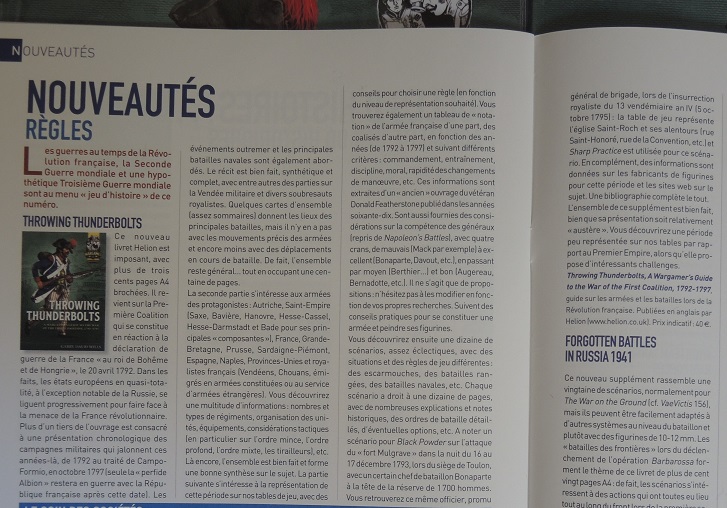
My translation of the review is;
This new Helion booklet is impressive, with more than three hundred A4 paperback pages. He looks back at the First Coalition, which was formed in reaction to the declaration of war by the France << the King of Bohemia and Hungary" on 20 April 1792. In fact, almost all European states, with the notable exception of Russia, are gradually joining forces to face the threat of revolutionary France. More than a third of the book is devoted to a chronological presentation of the military campaigns that punctuated those years, from 1792 to the Treaty of Campo-Formio, in October 1797 (only the <<perfidious Albion:" remained at war with the French Republic after that date). Overseas events and major naval battles are also discussed. The narrative is well done, concise and complete, with, among other things, parts on the military Vendée and various royalist upheavals. A few (rather sketchy) maps give the locations of the main battles, but there are none with the precise movements of the armies and even less with movements during the battle. In fact, the whole remains general... while occupying a hundred pages.
The second part focuses on the armies of the protagonists: Austria, the Holy Roman Empire (Saxony, Bavaria, Hanover, Hesse-Kassel, Hesse-Darmstadt and Baden for its main << components >>), France, Great Britain, Prussia, Sardinia-Piedmont, Spain, Naples, the United Provinces and French royalists (Vendéens, Chouans, émigrés in armies formed or in the service of foreign armies). You will discover a wealth of information: numbers and types of regiments, organization of units, equipment, tactical considerations (especially on thin order, deep order, mixed order, skirmishers), etc. Again, the whole is well done and forms a good synthesis on the subject. The next part looks at the representation of this period on our gaming tables, with tips for choosing a rule (depending on the desired level of representation). You will also find a table of <<ratings" of the French army on the one hand, and of the coalition on the other, according to the years (from 1792 to 1797) and according to different criteria: command, training, discipline, morale, speed of manoeuvre changes, etc. This information is taken from an <<old" book by veteran Donald Featherstone published in the 1970s. Also given are considerations on the competence of the generals (taken from Napoleon's Battles), with four notches, from bad (Mack for example) to excellent (Bonaparte, Davout, etc.), including average (Berthier, etc.) and good (Augereau, Bernadotte, etc.). These are only proposals: feel free to modify them according to your own research. Here are practical tips on how to build an army and paint your miniatures.
You will then discover a dozen scenarios, quite eclectic, with different situations and game rules: skirmishes, pitched battles, naval battles, etc. Each scenario is allowed about ten pages, with numerous explanations and historical notes, detailed orders of battle, possible options, etc. Note a scenario for Black Powder about the attack on the <<Fort Mulgrave" on the night of December 16 to 17, 1793, during the siege of Toulon, with a certain battalion commander Bonaparte at the head of the reserve of 1700 men. You will find this same officer, promoted to brigadier general, during the royalist insurrection of 13 Vendémiaire Year IV (5 October 1795): the gaming table represents the church of Saint-Roch and its surroundings (rue Saint-Honoré, rue de la Convention, etc.) and Sharp Practice is used for this scenario. In addition, information is given on the manufacturers of figurines for this period and websites on the subject. A bibliography completes the picture. The whole of this supplement is well done, although its presentation is relatively << austere >>. You will discover a period that is not very well represented on our tables compared to the First Empire, while it offers interesting challenges.
Throwing Thunderbolts, A Wargamer's Guide to the War of the First Coalition, 1792-1797, guide to armies and battles during the French Revolution. Published in English by Helion (www.helion.co.uk). Prix indicatif : 40 €.
- Black Powder Points Values from the 1st Edition ”30/12/2021”
- Salute 2021 ”14/11/2021”
We took Wellington at Bay to Salute this year, here is how Wargames, Soldiers and Strategy presented it;
- An Affair of Posts -the battle of Lincelles, 18 August 1793 ”14/10/2021”
On 22 September 2021, I presented this paper the Society of Army Historical Research Centenary Conference at the National Army Museum, Chelsea. My final rehearsal was captured on video and can be seen on my Youtube Channel;
My wargame of Lincelles is shown in this video
- Some great feedback ”14/10/2021”
My chapter 'Maucune's Division at Salamanca' in Helion's 'Glory is Fleeting' has been well received by the expert on Salamanca, Rory Muir;
Here are a couple of illustrations from the chapter.
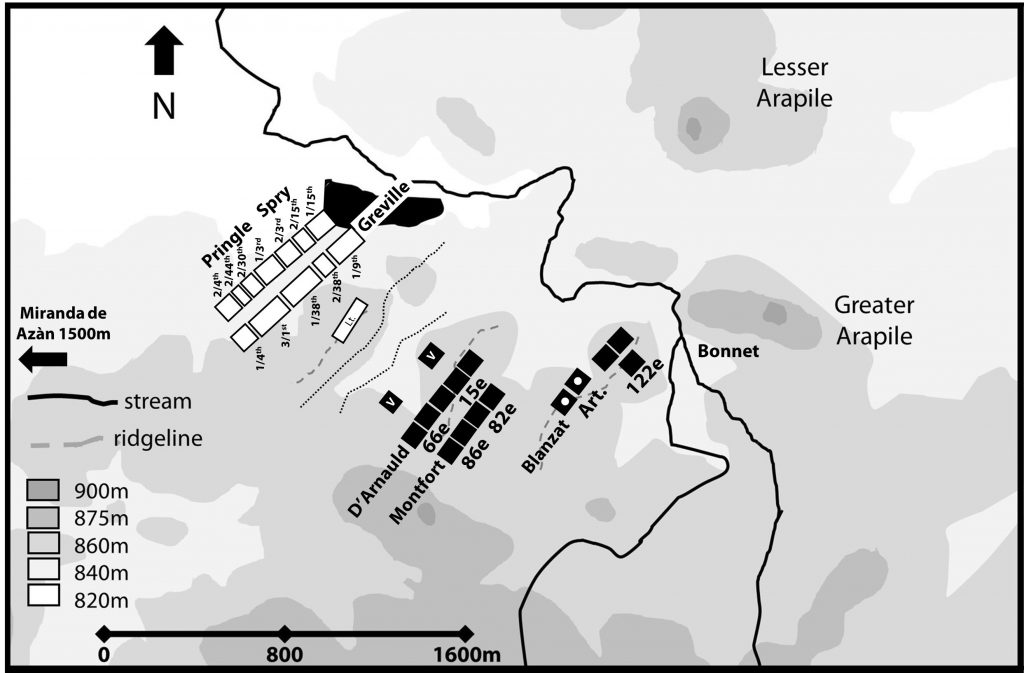
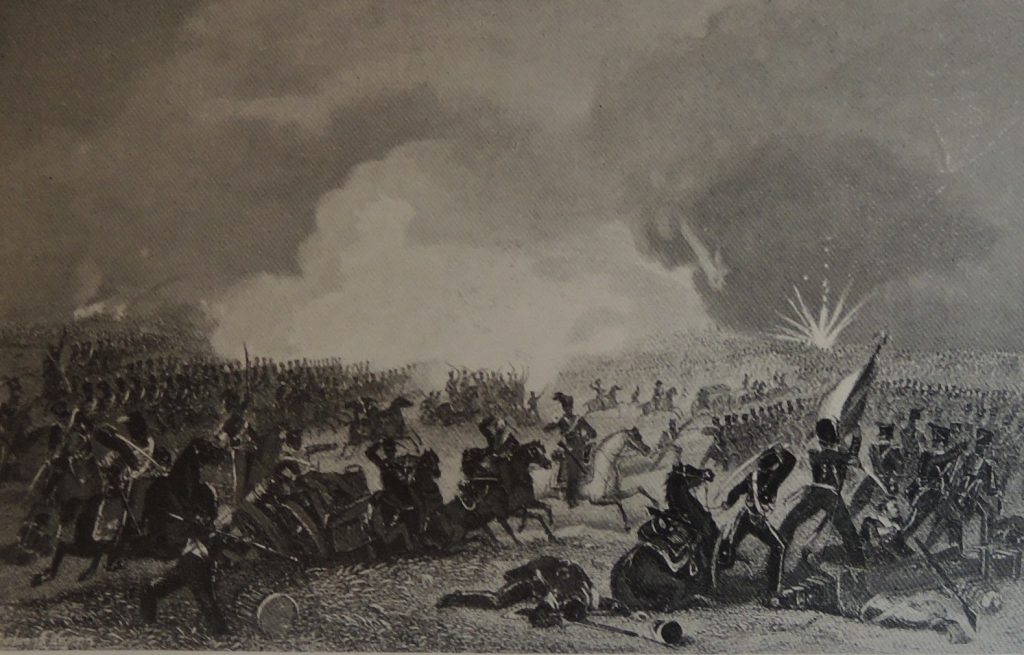
Amongst other things I suggest that the 5e battalion 66e Ligne lost its new all green battalion fanion to the 11th Foot in the closing stages of the battle. This illustration from the National Army Museum, just might be that flag;
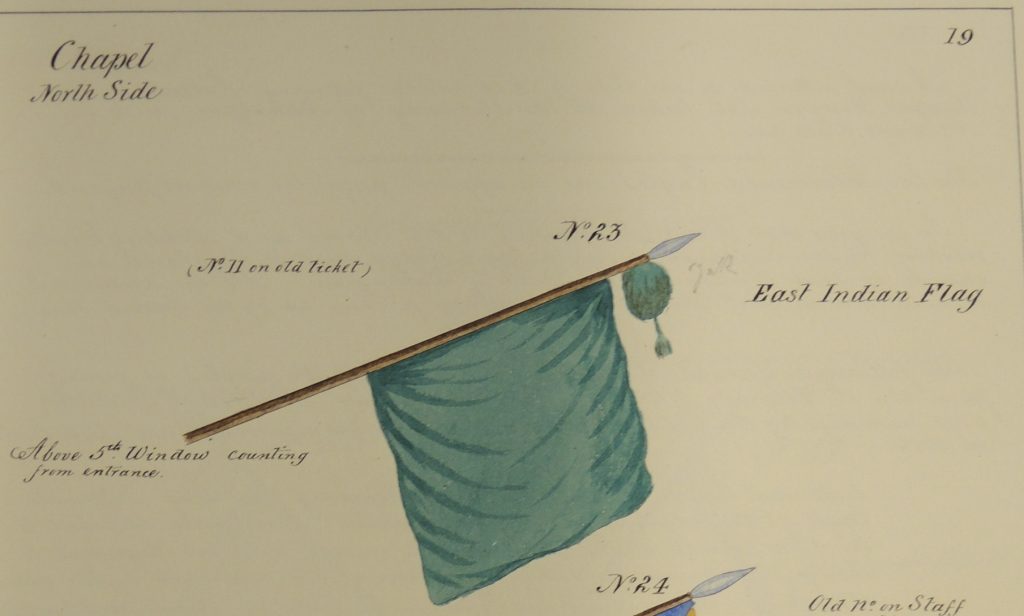
I also included an analysis of the story and myths of the captured eagles and other trophies taken from the French at Salamanca. A separate article on one of those myths can be found on the Helion website using this link;
- More photos from the Other Partizan 2021 ”14/10/2021”
Henry Hyde took these excellent shots of James and I playing 'Wellington at Bay';
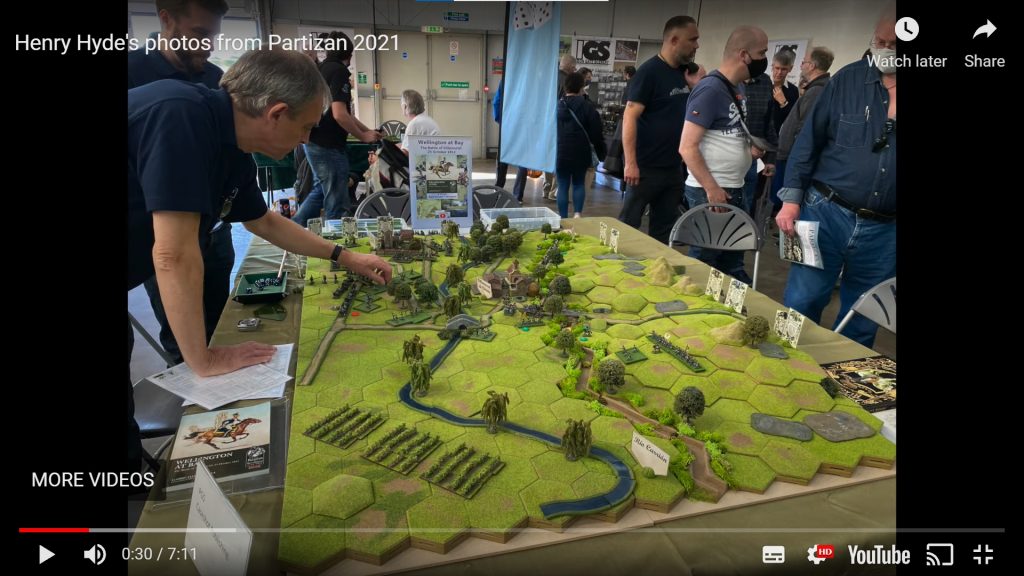

Andrew Bamford, my editor at Helion & Company took this shot of me, with the Heion stand to my rear right where they sold out 'Wellington at Bay'.
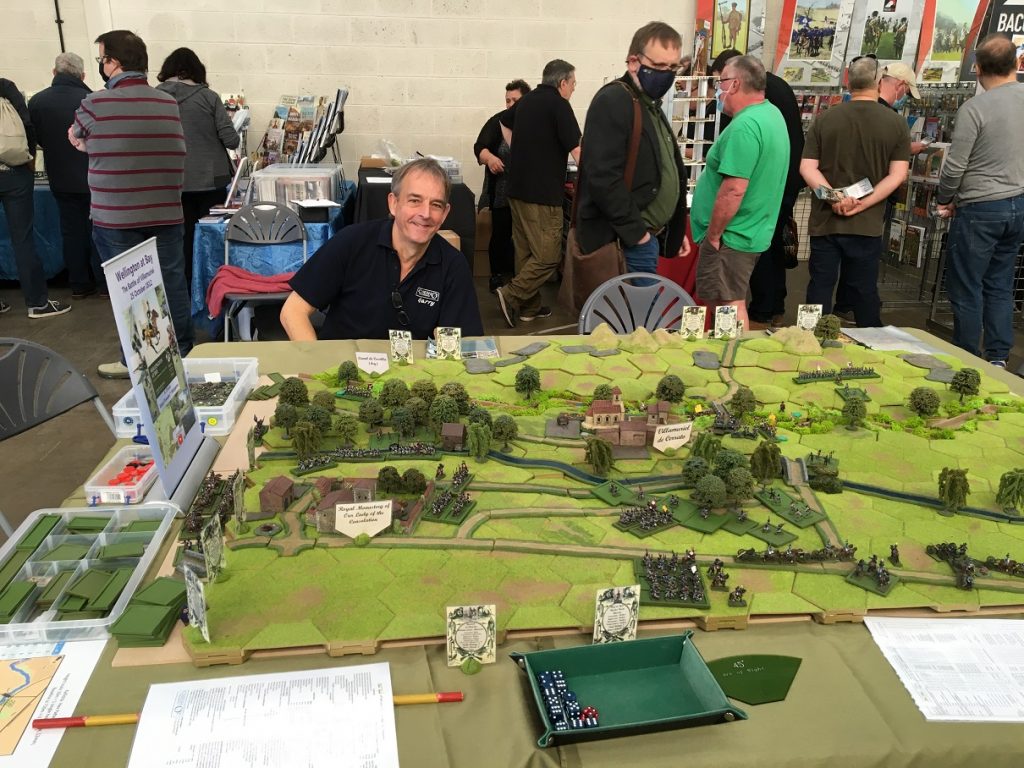
This shot is taken from Paint & Glue's video report of the day

This is a small snippet of Battle Bunker HQs video report showing James and I discussing our next moves in Wellington at Bay at the Other Partizan 2021
- Battle history of the French Battalions at Villamuriel
- Episode 31 Assault on Fort Mulgrave Toulon 1793 at The Other Partizan 2023
- Episode 32 Gen.de Div. Scherer’s Instruction to the Armee d’Italie 1795
- Factual Corrections and Additions for Throwing Thunderbolts
- Vae Victis review of Throwing Thunderbolts
- Black Powder Points Values from the 1st Edition
- Salute 2021
- An Affair of Posts -the battle of Lincelles, 18 August 1793
- Some great feedback
- More photos from the Other Partizan 2021
<?php get_sidebar(); ?>